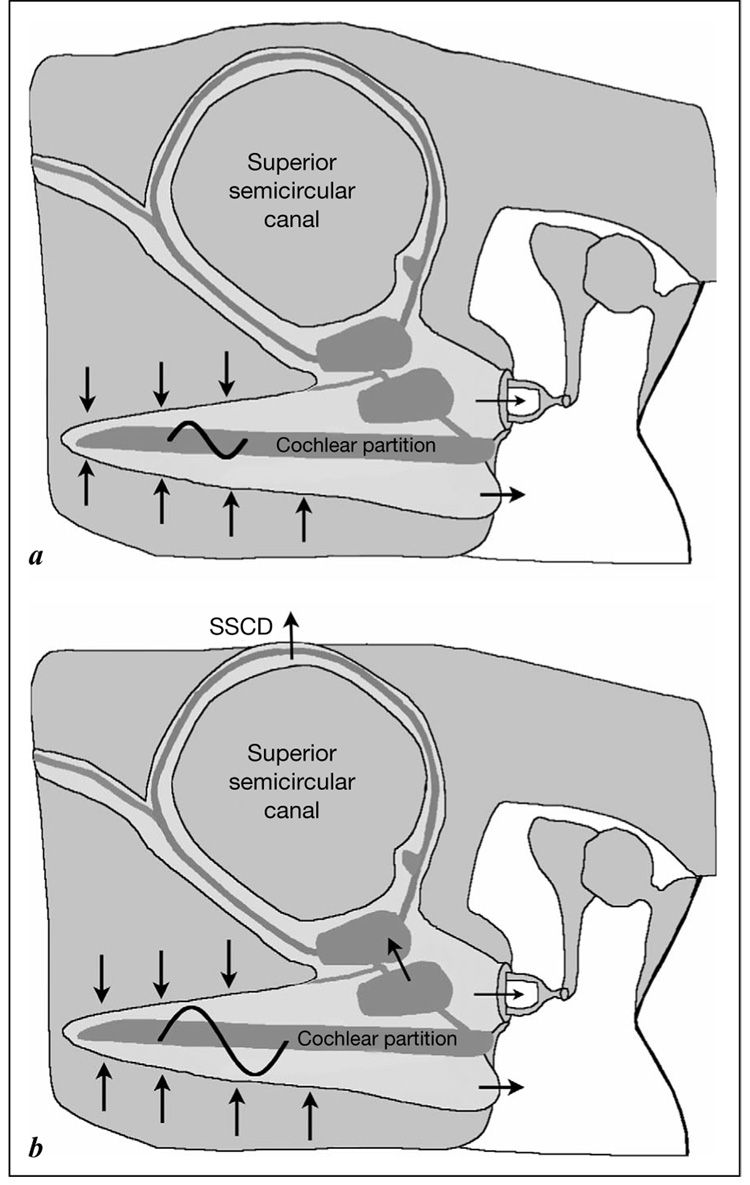Fig. 4.
a Normal bone conduction by the compressional mechanism. Bone-conducted sound causes compression of inner ear fluids. This results in a pressure difference across the cochlear partition because of unequal impedance between the scala tympani and scala vestibuli. In the normal ear, the scala tympani impedance is controlled by the round window, while the scala vestibuli impedance is controlled by the stapes and oval window. b Proposed mechanism of improved bone conduction thresholds in SSCD. SSCD acts as a third window and increases the inequality in impedance between the scalae. Hence, the pressure difference across the cochlear partition is increased compared to normal, resulting in improved thresholds for bone-conducted sound.

